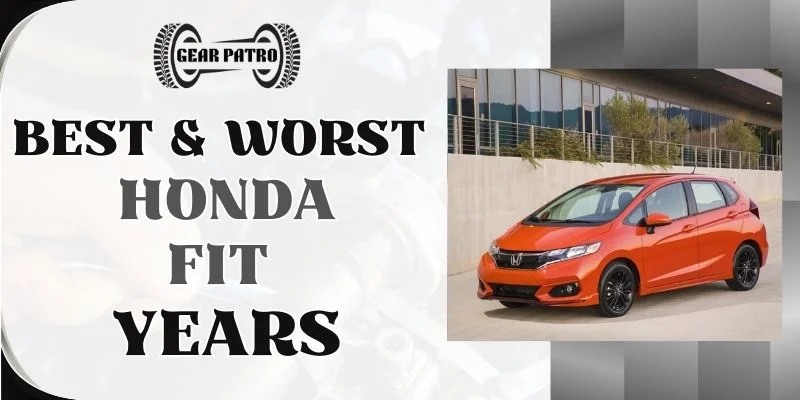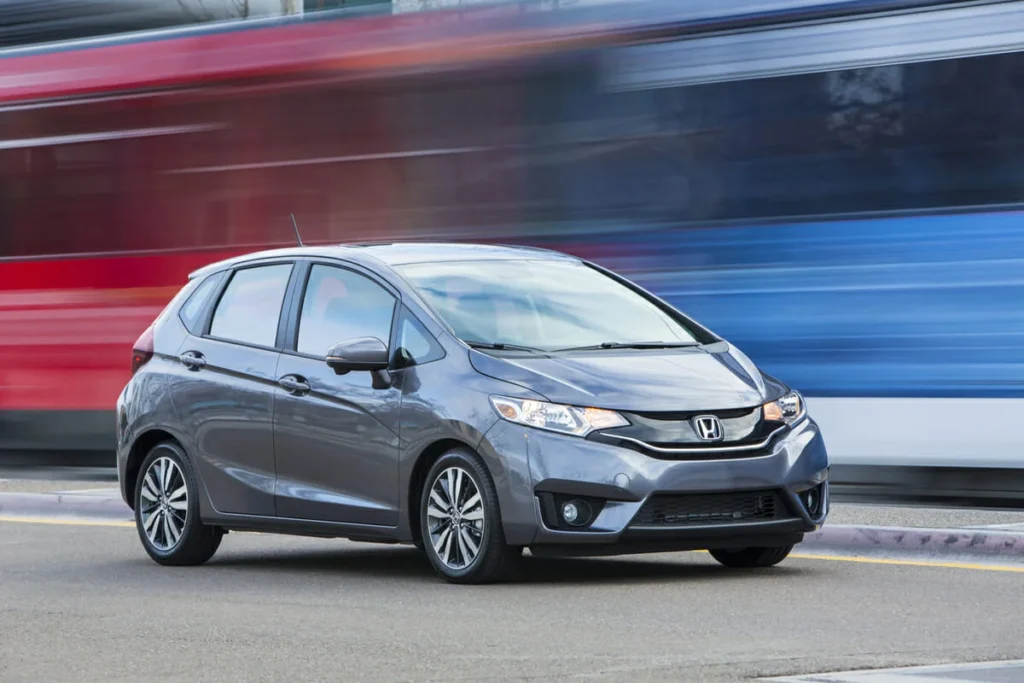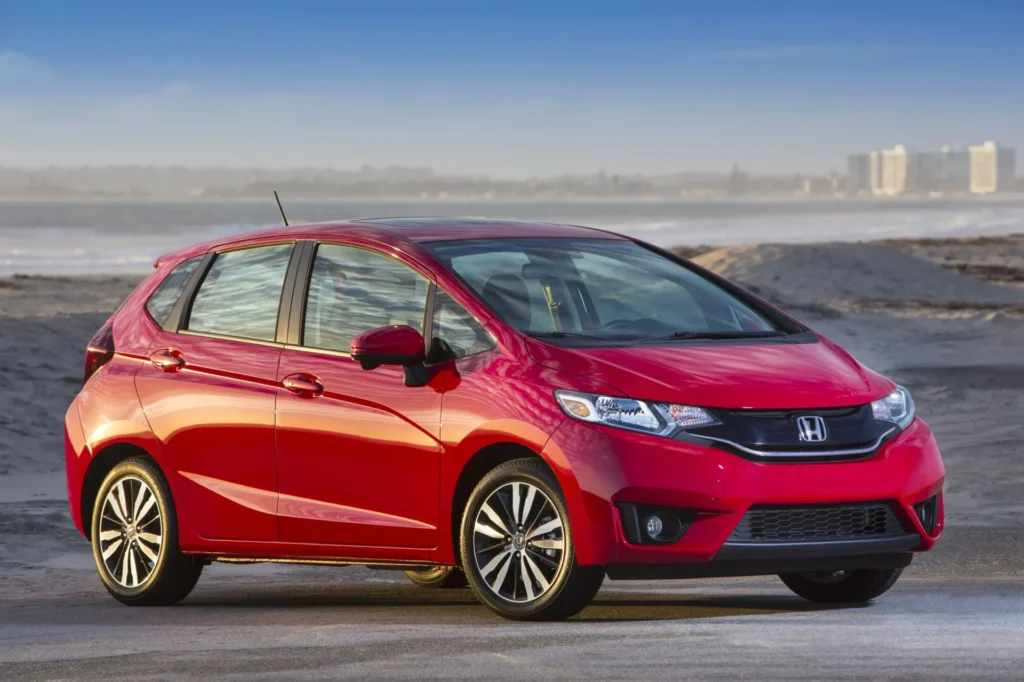Here is a detailed breakdown for every Honda Fit year from 2007 to 2020, along with advice on which Honda Fit year is right for you and which Honda Fit year is not.
We will review various generations of Honda Fits, allowing you to determine which model years to choose and which to avoid.

We’ve compiled an in-depth guide based on authoritative sources such as NHTSA, Consumer Reports, and other sources combined with meticulous research to help potential buyers understand the Honda Fit’s strengths and weaknesses.
The purpose of this guide is not only to outline the evolution of the Honda Fit over the years, but also to highlight the specific model years that stood out based on a variety of critical factors.
Let’s jump right in.
Honda Fit Generations
Honda Fit, or Honda Jazz in other markets, was introduced to the automotive world in 2001 and quickly established itself as a standout subcompact car.
The Honda Fit made its global debut in 2001, but it didn’t make its North American debut until 2007, after which it was made available in the region.
Our table below summarizes the various generations of Honda Fit for the North American market from 2007 to 2020.
| Generation | Years |
| 1st generation (GE1/2/3) | 2007-2008 |
| 2nd generation (GE6/7/8/9) | 2009-2013 |
| 3rd generation (GK/GH/GP) | 2015-2020 |
In many cases, consumers make purchase decisions based on the difference between these generations.
There’s more to it than the model year alone. It’s about advances in technology, safety, performance, and comfort that come with generational modifications.
Honda Fit Best, Neutral, and Worst Years
Our analysis includes a multitude of variables and sources when determining which years are best, neutral, and worst for Honda Fits, including but not limited to:
A comprehensive overview of every year’s performance can be seen in the chart below, showing ratings from all sources mentioned above.
In the following table, the cumulative data is used to categorize each model year of the Honda Fit as best, neutral, or worst.
| Generation | Best Years | Neutral Years | Worst Years |
| 1st generation | 2008 | N/A | 2007 |
| 2nd generation | 2011 2012 | N/A | 2009 2010 2013 |
| 3rd generation | 2016 2017 2019 | 2018 2020 | 2015 |
“Neutral Years” are those model years that offer a balanced mix of pros and cons, encompassing both good and bad characteristics.
It’s important to note that some of these factors negatively influence our evaluations. NHTSA recalls, for instance, indicate greater reliability and owner satisfaction when there are more complaints and recalls.
Take a look at the best, neutral, and worst years by looking at their specifications.
Best & Worst Years for Honda Fit 1st Generation (2007-2008)
When the Honda Fit first appeared on the North American market in 2007, Honda was looking for a vehicle that combined space efficiency and fuel economy to capture the subcompact segment.

The Best Years: 2008
There was a lot of success for the Honda Fit in 2008. To cater to the diverse needs of urban dwellers, this model was equipped with an innovative “Magic Seat” setup.
There was a choice between a five-speed manual and a five-speed automatic transmission on the 2008 Fit, which was powered by a 1.5-liter i-VTEC engine. According to Consumer Reports, this engine-transmission combination greatly contributed to the car’s impressive fuel economy, averaging 22 mpg in the city and 43 mpg on the highway.
A sport edition of the Fit has paddle shifters, an alloy wheel, and a rear spoiler, which makes it a stand-out among base versions of the Fit.
A full-length side curtain airbag was standard, as were anti lock brakes and front-seat side airbags.
Despite some airbag recalls shared with the 2007 model, the 2008 Fit, on the whole, demonstrated improved reliability and received more positive reviews from both critics and consumers.
The Worst Years: 2007
Despite Honda Fit’s entry into the subcompact market segment in 2007, the brand had initially encountered challenges.
There were a number of issues with airbags and steering reported by owners of this inaugural model, including intermittent illumination of the airbag light and problems with the power steering assist.
There have been major recalls of passenger frontal airbag inflators in the past three years (2016, 2017 and 2019), which were identified as having the potential for exploding and causing serious injury.
A second important recall was initiated in 2020 for Fits equipped with manual transmissions from 2007 and 2008. This was in reference to drive shafts that may suffer corrosion, which can adversely affect the car’s performance or even cause it to roll.
When opting for early iterations of any vehicle model, considering the recalls and owner complaints highlights the importance of careful consideration.
In order to avoid buying a vehicle that has been adversely affected by these recalls, it is recommended to check the VIN before purchasing.
Best & Worst Years for Honda Fit 2nd Generation (2009-2013)
From 2009 to 2013, Honda’s 2nd generation Fit showcased Honda’s refinement of its subcompact model.

As its predecessor, the 2nd-gen Fit was aerodynamically designed, had an improved interior space, and featured enhanced technologies, making it one of the most competitive SUVs on the market.
The Best Years: 2011, 2012
Two of the most notable years for the 2nd generation Honda Fit were 2011 and 2012. A number of refinements were introduced during these years, especially in the areas of cabin enhancement and noise insulation.
There was an option to switch to an automatic transmission or a five-speed manual transmission for models from these years.
As reported by Consumer Reports, the engine and transmission combination contributed to the car’s impressive fuel economy, which was 21 mpg in the city and 39 mpg on the highway.
In certain markets, there were a variety of trim levels, including base, sport, and even a hybrid version, although the latter was more popular in Japan.
In order to distribute crash energy more uniformly, advanced compatibility engineering (ACE) was developed as a standard. Among the other features of these models were stability control, traction control, and an antilock braking system (ABS) with brake assist.
As a result of a balance of quality, performance, and price, Consumer Reports awarded both years the Best Overall Value award.
The Worst Years: 2009, 2010, 2013
In contrast, there were a few challenges with the 2nd generation Fit in the years 2009, 2010, and 2013.
It was particularly troubled by problems regarding airbags and power steering assistance in the 2009 model year, reminiscent of the previous generation’s problems. In addition to these, owners began to voice concerns about the powertrain, specifically about transmission problems.
Additionally, the Fit models produced from 2009-2013 were recalled in 2020. Essentially, the recall was about drive shaft corrosion, which could impact drive power or even cause the vehicle to roll away, thereby causing a crash.
Airbag-related issues affected the 2010 and 2013 models, despite slightly better performance. Despite earning Consumer Reports’ Best Overall Value award in 2010, the 2010 model couldn’t entirely overcome the stigma associated with these persistent problems.
In spite of the fact that some of these issues were addressed in the 2013 model, which marked the end of this generation, there were still some shortcomings that remained.
Before considering these specific model years, buyers should exercise caution, checking thoroughly for recalls and owner complaints.
The NHTSA has recalled and addressed Honda Fits in 2009, 2010, and 2013.
Best & Worst Years for Honda Fit 3rd Generation (2015-2020)
A significant redesign and refinement took place for the Honda Fit upon entering its third generation. A new interior overhaul offered more space and modern amenities, as well as a more aggressive stance. It featured sharper body lines and a more aggressive appearance.

Featuring a 1.5-liter DOHC i-VTEC engine, the 3rd generation models provided a good balance of power and efficiency.
The Best Years: 2016, 2017, 2019
It wasn’t until 2016 that Honda had addressed many of the initial teething problems, bringing a reliable, feature-rich Fit to the market.
In combination with either a manual 6-speed transmission or a CVT transmission, the engine delivered lively performance that complemented the nimble handling of the car.
In addition to fuel efficiency, Consumer Reports found the vehicle to be impressively fuel efficient with a city fuel economy rating of 24 mpg and a highway fuel economy rating of 42 mpg.
There have been a variety of trim levels added to the Fit during these years, such as LX, EX, EX-L, and Sport.
With the introduction of Honda Sensing safety suite in later models, technological advancements were rife, including a 7-inch touchscreen display, LaneWatch cameras, and Honda Sensing memory features.
As part of Honda Fit’s safety and technology suite, it includes adaptive cruise control, collision mitigation braking, and road departure mitigation.
The Neutral Years: 2018, 2020
Despite the positive things that happened during the year 2018 and 2020, they did not achieve the same level of success as their immediate predecessors or successors, which has been commendable in its own right.
Fit models were known for reliability, fuel efficiency, and ample safety features, all of which were maintained with these models.
The car was occasionally plagued with minor electrical problems, but they were not widespread enough to negatively impact its image.
There was only slight variation in the features and packages offered during these two years, but both years managed to retain the Fit’s charm.
The Worst Years: 2015
In 2015, the Fit third generation faced a number of challenges. There have been complaints from owners about various issues with their engines and electrical systems. When the engine was cold, it produced a rattling noise.
Additionally, Honda was forced to recall two specific vehicles that year due to concerns about damage to the ignition coils on the plug tops and potential damage to the drive pulley shafts on the transmissions.
In spite of Honda’s proactive approach to these issues, the 2015 Fit was overshadowed by these initial glitches.
It is advised that prospective buyers exercise caution and conduct their due diligence before making a purchase of this particular model year.
For a list of Honda Fit recalls and complaints for 2015, visit the NHTSA website.
Best & Worst Honda CR-V Years | Years To Avoid
Best & Worst Honda Civic Years | Years To Avoid
Best & Worst Honda Accord Years | Years To Avoid
Best & Worst Honda Odyssey Years | Years To Avoid
Best & Worst Honda Pilot Years | Years To Avoid
Best & Worst Honda Ridgeline Years | Years To Avoid
Conclusion
In the evolution of the Honda Fit over the years, certain years stand out more than others. If you are considering making a purchase, the year you pick should be aligned with your priorities.
Why did you choose that particular model year of the Honda Fit? Have your preferences been influenced by any personal experiences?
Comment below to share your thoughts!
